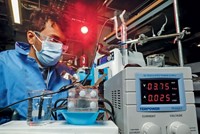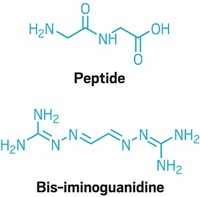Advertisement
Grab your lab coat. Let's get started
Welcome!
Welcome!
Create an account below to get 6 C&EN articles per month, receive newsletters and more - all free.
It seems this is your first time logging in online. Please enter the following information to continue.
As an ACS member you automatically get access to this site. All we need is few more details to create your reading experience.
Not you? Sign in with a different account.
Not you? Sign in with a different account.
ERROR 1
ERROR 1
ERROR 2
ERROR 2
ERROR 2
ERROR 2
ERROR 2
Password and Confirm password must match.
If you have an ACS member number, please enter it here so we can link this account to your membership. (optional)
ERROR 2
ACS values your privacy. By submitting your information, you are gaining access to C&EN and subscribing to our weekly newsletter. We use the information you provide to make your reading experience better, and we will never sell your data to third party members.
Environment
Carbon Capture Facilitated By Ionic Liquid’s Phase Change
ACS Meeting News: Technology could reduce the energy required to trap carbon dioxide
by Jyllian Kemsley
August 18, 2014
| A version of this story appeared in
Volume 92, Issue 33
This week’s selections are from the ACS national meeting, which took place on Aug. 10–14 in San Francisco.
An ionic-liquid-based material that changes from solid to liquid upon reacting with carbon dioxide could lower the energy costs of capturing CO2 from power plant emissions, reported Joan F. Brennecke of the University of Notre Dame. The so-called phase-change ionic liquid (PCIL) is composed of a tetraethylphosphonium salt that is solid at normal postcombustion flue gas temperatures of 40 to 80 °C. CO2 reacts stoichiometrically and reversibly with an aprotic heterocyclic anion, reducing the melting point of the material and turning the solid into a liquid (Energy Fuels 2014, DOI: 10.1021/ef501374x). In the proposed process, a slurry of the solid PCIL and PCIL-CO2 would be used in an absorber to capture more CO2. The resulting liquid would be heated to drive off the CO2 for storage elsewhere while the PCIL is reused. The combined enthalpies of the CO2 binding and release reactions and the associated phase changes would reduce the external energy consumed by carbon capture to about 23% of the energy produced by a conventional coal power plant, compared with 28% for current carbon capture systems.





Join the conversation
Contact the reporter
Submit a Letter to the Editor for publication
Engage with us on Twitter